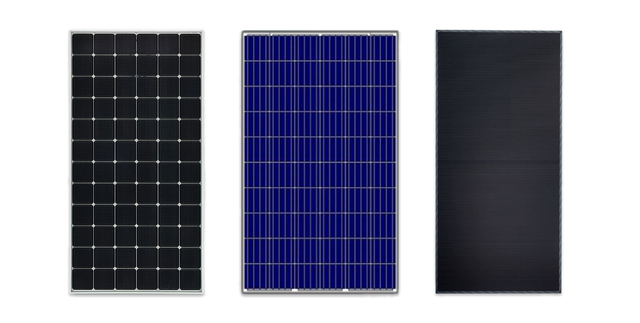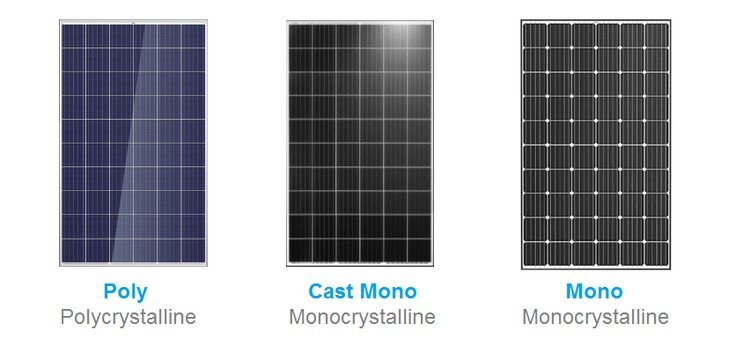9 Easy Facts About Solar Systems Explained
Wiki Article
Our Solar Systems Ideas
Table of ContentsSolar Systems Things To Know Before You BuySolar Systems for DummiesThe Best Guide To Solar SystemsThe Ultimate Guide To Solar Systems
There are three different types of solar panels: monocrystalline, polycrystalline, as well as slim movie. Monocrystalline photovoltaic panels are very effective and also have a streamlined layout, yet come with a higher cost point than other solar panels. Polycrystalline solar panels are less costly than monocrystalline panels, however, they are much less reliable and also aren't as cosmetically pleasing.Nowadays, there are a number of selections of monocrystalline photovoltaic panels on the marketplace to select from. Passivated Emitter and also Back Call cells, even more generally described as PERC cells, are coming to be an increasingly popular monocrystalline option. PERC cells go through a various manufacturing and also setting up process that enhances the amount of power the cells can produce.
Due to the fact that monocrystalline solar batteries are made from a solitary crystal of silicon, electrons are able to easily stream throughout the cell, enhancing overall performance. Not just do monocrystalline panels have the highest efficiency rankings, they commonly likewise have the highest power capacity ratings, too. A lot of monocrystalline panels on the marketplace today will have a power output score of at least 320 watts, however can go up to around 375 watts or greater!.
Because polycrystalline cells have multiple silicon cells, the electrons can stagnate as conveniently and also consequently, reduce the effectiveness of the panel. The lower effectiveness of polycrystalline panels also indicates they tend to have a lower power output than monocrystalline panels, normally varying between 240 watts as well as 300 watts.
10 Simple Techniques For Solar Systems
4% effectiveness with slim movie cell prototypes however. In order to fulfill your energy needs, you would need to set up more slim movie panels over a huge location to generate the very same amount of electricity as crystalline silicon photovoltaic panels. This is why thin movie solar panels don't truly make sense for household installations where room is limited.The temperature level coefficient informs you exactly how a lot the power outcome will reduce by for every 1 * C over 25 * C the panel obtains. The common temperature level coefficient for mono as Full Report well as polycrystalline panels usually falls someplace in between -0.
In truth, with some thin movie panels, it's difficult to also see the individual cells within the panel. They also have a tendency to have less circuitry and busbars, implying there's much less white area. Because they are so ineffective, you would require to cover your entire roof covering in thin movie panels - which might or might not be your style.

Some producers have worked around this with black packing or shaping the cells in different ways, however these aesthetic changes can impact both the price and performance of the panels. On the whole, monocrystalline panels still look streamlined, yet they're a bit a lot more noticable than thin film panels. solar systems. The procedure in which polycrystalline solar batteries are produced creates the cells to have a blue, marbled appearance.
4 Easy Facts About Solar Systems Shown
If you get on a limited spending plan, polycrystalline panels could read this make more feeling for you. We do not suggest slim movie photovoltaic panels for household installments - their performance and also longevity don't make the reduced expense worth it, and also it's unlikely you'll have virtually sufficient room to install the variety of slim movie panels you would require to cover your home power usage.Considering that they are made from pure silicon, they can be readily determined by their dark black shade. The use of pure silicon additionally makes monocrystalline panels the most space-efficient as well as longest-lasting amongst all three solar panel kinds. This comes at a cost a great deal of silicon is thrown away to produce one monocrystalline cell, often getting to over 50%. solar systems.

Amorphous silicon panels (A-Si) acquire their name from their shapeless nature. Unlike mono-and polycrystalline solar cells, the silicon is not structured on the molecular degree.
Some Known Details About Solar Systems
50 $0. 50 $0. 50 Note that these figures do not consist of the expense of setup and labor.
This suggests that thin-film panels can be a good choice for hotter atmospheres or areas that experience even more sunlight throughout the year. The updated International Building regulations of 2012 needs solar panels to match the fire rating of the roofing where they are mounted. This is to make sure that the components do not speed up the spread of fires in the event of a fire.
Report this wiki page